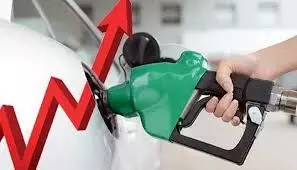- Home
- /
- Business/Economy
- /
- Fuel: Kano residents...
Fuel: Kano residents dump cars, resort to bicycles, electric bikes

Some residents of Kano have abandoned their cars to embrace trekking, use of bicycles, electric bikes, and commercial tricycles for mobility as the petroleum price jumps to N1,150 in the state.
The correspondent observed on Sunday that there were fewer cars on the road and a greater than usual number of pedestrians, bicycle riders, and electric bike users.
One of the pedestrians, Sani Isa, said that the cost of mobility has increased significantly as tricycle operators doubled their fares to reflect the new pump price.
He said the situation had affected him adversely because he now spends at least N1,200 daily on transportation.
Isa said he resorted to the use of bicycles because they were cheaper and more affordable.
A student, Aminu Ishaq, who rides a bicycle to Kano Polytechnic on a daily basis, says that it is a big relief to his ageing parents, who can afford the high cost of transport.
“I don’t waste time waiting for a tricycle. I am always in school on time. I am full of energy,” Ishaq said.
A civil servant, Muhammad Sadiq, said he had now adjusted to breaking his journey to office by trekking halfway to the Federal Secretariat before boarding a commercial tricycle.
“What I do now is to break my movement, trek to a point, then take Keke from there. I will save at least N300.
“Since the increase in pump price, many riders packed their tricycles and went into other businesses,” he said.
Another resident, Ali Abdullahi, also said that since the increase, he has abandoned his vehicle for an electric bike, saying that it saves money.
“I have two cars. I sold one and bought an electric motorcycle for N900,000, which is easier to maintain,” he explained.
A businessman, Tasi’u Murtala, who bought an electric motorcycle recently said that he spends N5,000 daily to fuel his car.
According to him, he bought an electric bike for N750, 000, which is cost-effective, describing the vehicle as cost-effective.
“When the motorcycle is fully charged, it covers 60 km before its battery runs down. I use electricity, solar, or a generator set to recharge it daily,” he explained.




